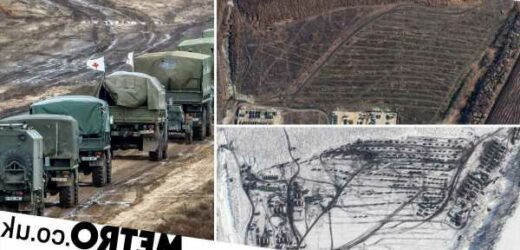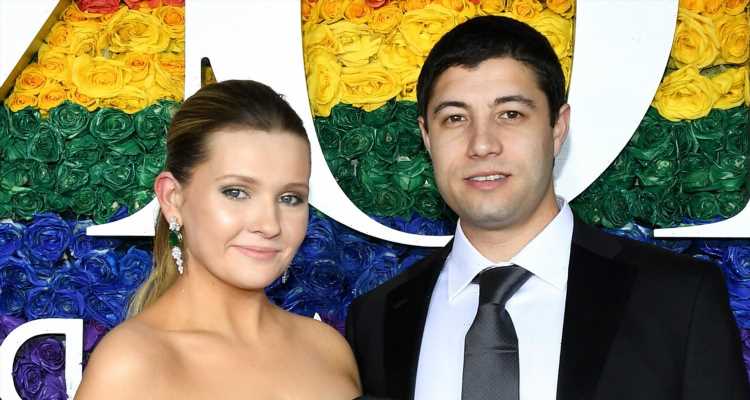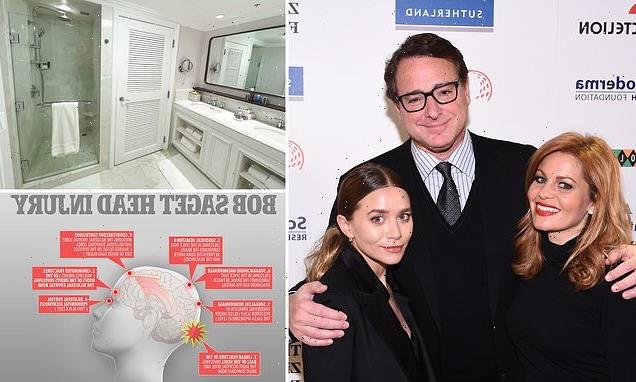For several months, Russia has been building a force capable of storming Ukraine on its border.
The number of soldiers Western intelligence agencies believe are in position is now somewhere just short of 200,000 – and rising.
The troops, tanks and aircraft are spread over sovereign states, three illegal republics and one body of water.
Ukraine shares more than 2,200 miles of land and sea border with Russia and its puppet state, Belarus, both of which are lined with pockets of fighters and hardware.
It also shares a 280 mile border with Transnistria, an unrecognised breakaway republic sandwiched between Ukraine and Moldova which is known to have a Russian military presence.
On top of that, Russian backed-forces – and, it appears, Russian soldiers – are also in the illegally declared republics of Donetsk and Luhansk, deep inside Ukraine’s internationally recognised territory.
The Black Sea to the south is also known to have a large Russian naval presence, while Crimean peninsula has housed Russian soldiers since 2014.
These soldiers are not sat in large blocs waiting to move en masse – instead, they are positioned in smaller battlegroups at strategic points, spanning the breadth of Ukraine’s perimeter.
Satellite images captured by an American company, Maxar, have shown this gradual build-up happening in real time.
*All images on the right are taken from Google’s most recent satellite imagery.
This week, Vladimir Putin recognised the illegal republics in the Donbas region, killing the frozen in the process and effectively declaring war on the Ukrainian government.
The Russian president says he still wants the status of the area to be resolved diplomatically but his authorisation for Russian troops to cross the border in the guise of a ‘peacekeeping’ mission makes it clear he is preparing to fight for them.
Moscow’s use of covert battle tactics is well known and it’s unclear how many of its forces are already in Ukraine.
Footage posted on social media has shown an increase in the amount of military hardware in areas controlled by pro-Russian forces.
Reuters has also reported seeing more tanks on the streets since Mr Putin’s announcement on recognising the Donbas breakaways, but witnesses said they were unmarked.
This is not unheard of: when Crimea annexed Ukraine in 2014, the first wave of forces wore uniforms without insignias – nicknamed ‘little green men’ – to obscure Russia’s culpability.
Kyiv has responded by declaring a national state of emergency lasting 30 days and reinforcing military deployments in the east of the country.
Ukraine’s army is far stronger now than it was in 2014 when the conflict began, bolstered by aid from the West.
Boris Johnson confirmed today further military aid would be sent to Ukraine ‘in light of the increasingly threatening behaviour’ from Russia.
Some in the US intelligence community reportedly believe Mr Putin has already decided to carry out a widespread invasion, as opposed to focusing his forces on the predominantly Russian-speaking east.
It’s feared tens of thousands could die within a matter of days if this course of action is pursued.
The US ambassador to the UN has also publicly aired intel claiming Moscow has drawn up a list of targets who will be killed or sent to camps in the event of an invasion in order to crack any resistance and aid the installation of a puppet regime.
Get in touch with our news team by emailing us at [email protected].
For more stories like this, check our news page.
Source: Read Full Article









